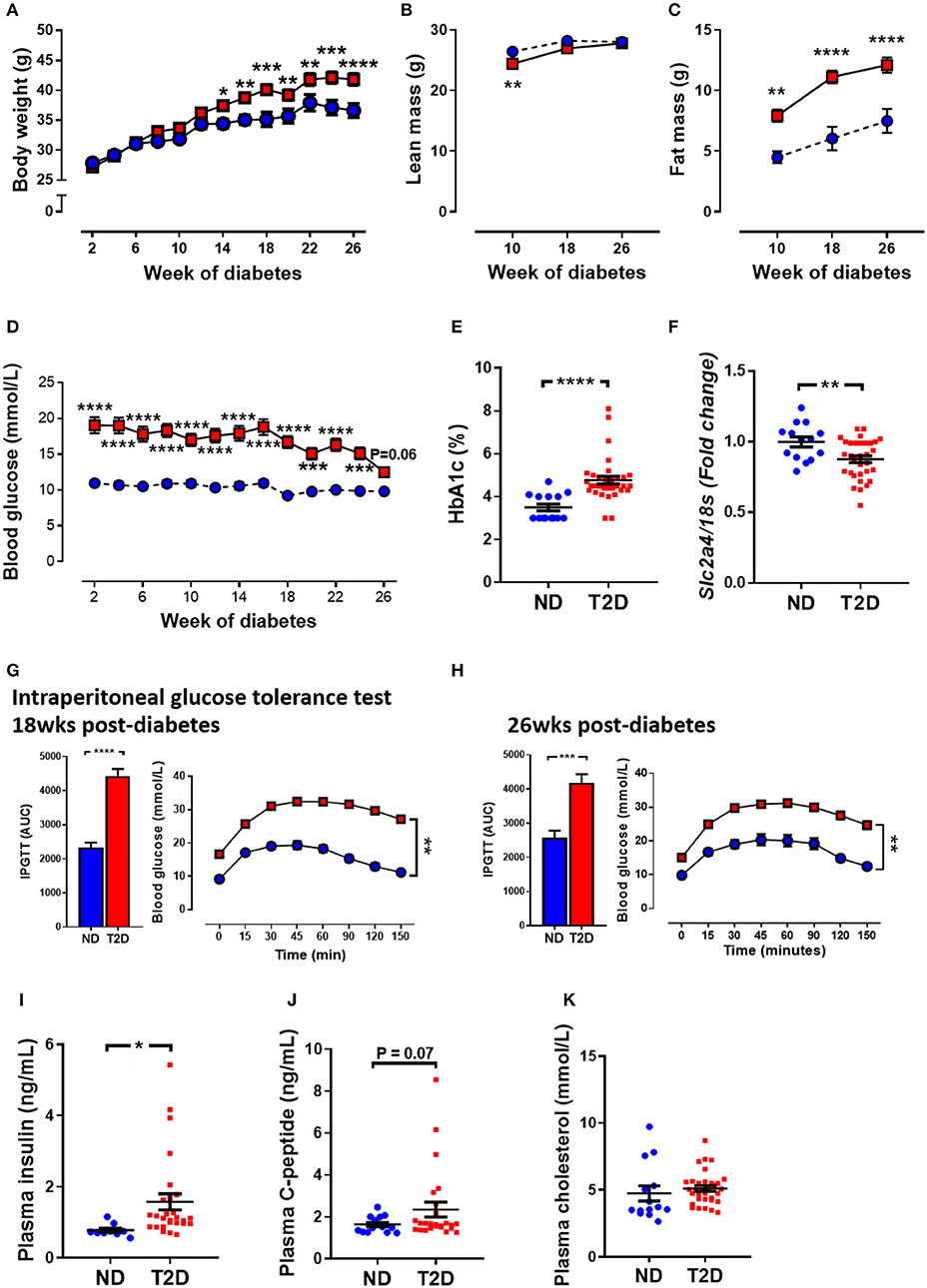- 1Heart Failure Pharmacology, Baker Heart and Diabetes Institute, Melbourne, VIC, Australia
- 2Department of Diabetes, Central Clinical School, Monash University, Melbourne, VIC, Australia
- 3School of Biosciences, The University of Melbourne, Melbourne, VIC, Australia
- 4Oxidative Stress Laboratory, Baker Heart and Diabetes Institute, Melbourne, VIC, Australia
- 5Preclinical Cardiology, Microsurgery and Imaging Platform, Baker Heart and Diabetes Institute, Melbourne, VIC, Australia
- 6Department of Pharmacology and Therapeutics, The University of Melbourne, Melbourne, VIC, Australia
A Corrigendum on
Characterising an Alternative Murine Model of Diabetic Cardiomyopathy
by Tate, M., Prakoso, D., Willis, A. M., Peng, C., Deo, M., Qin, C. X., et al. (2019). Front. Physiol. 10:1395. doi: 10.3389/fphys.2019.01395
In the original article, there was a mistake in Figures 1G and H as published. We have noticed that the Y-axis units of both bar graphs are incorrect. The data in these figures is based on the area under the curve (AUC) measurement from glucose tolerance test graphs. We have noticed that the Y-values for glucose have not been multiplied by the time on the X-axis, but rather the row number in the spreadsheet in Prism. The time values had been pasted into the title column and not the x-values column. By correcting the graphs, the actual outcomes for these graphs does not change the results or outcomes of the manuscript. The corrected Figures 1G and H and the entire Figure 1 appears below.

Figure 1. Effect of experimental diabetes (combining low-dose STZ and high fat diet) on metabolic characteristics. (A) Body weight, (B) lean mass, (C) fat mass, (D) blood glucose, (E) percentage glycated haemoglobin (HbA1c) and (F) LV Slc2a4 gene expression (glucose transporter GLUT4). Intraperitoneal glucose tolerance test (IPGTT) at (G) 18 weeks and (H) 26 weeks. Plasma (I) insulin, (J) C-peptide levels and (K) cholesterol at 26 weeks. Data are presented as mean ± SEM. n = 9–33 per group (note individual data points). Data analysed using unpaired t-test. *p < 0.05, **p < 0.01, ***p < 0.001, ****p < 0.0001 compared to ND. Blue circles ND; red squares T2DM. ND, non-diabetic; T2DM, type 2 diabetes; HbA1c, glycated haemoglobin; LV, left ventricle; STZ, streptozotocin, AUC, area-under-the-curve.
The authors apologise for this error and state that this does not change the scientific conclusions of the article in any way. The original article has been updated.
Publisher's Note
All claims expressed in this article are solely those of the authors and do not necessarily represent those of their affiliated organizations, or those of the publisher, the editors and the reviewers. Any product that may be evaluated in this article, or claim that may be made by its manufacturer, is not guaranteed or endorsed by the publisher.
Keywords: diabetes, type 2 diabetes, diabetic cardiomyopathy, cardiac, experimental model
Citation: Tate M, Prakoso D, Willis AM, Peng C, Deo M, Qin CX, Walsh JL, Nash DM, Cohen CD, Rofe AK, Sharma A, Kiriazis H, Donner DG, De Haan JB, Watson AMD, De Blasio MJ and Ritchie RH (2021) Corrigendum: Characterising an Alternative Murine Model of Diabetic Cardiomyopathy. Front. Physiol. 12:734320. doi: 10.3389/fphys.2021.734320
Received: 30 June 2021; Accepted: 27 July 2021;
Published: 19 August 2021.
Edited and reviewed by: Paras Kumar Mishra, University of Nebraska Medical Center, United States
Copyright © 2021 Tate, Prakoso, Willis, Peng, Deo, Qin, Walsh, Nash, Cohen, Rofe, Sharma, Kiriazis, Donner, De Haan, Watson, De Blasio and Ritchie. This is an open-access article distributed under the terms of the Creative Commons Attribution License (CC BY). The use, distribution or reproduction in other forums is permitted, provided the original author(s) and the copyright owner(s) are credited and that the original publication in this journal is cited, in accordance with accepted academic practice. No use, distribution or reproduction is permitted which does not comply with these terms.
*Correspondence: Rebecca H. Ritchie, UmViZWNjYS5SaXRjaGllQEJha2VyLmVkdS5hdQ==
†These authors share first authorship
‡These authors share senior authorship
 Mitchel Tate
Mitchel Tate Darnel Prakoso
Darnel Prakoso Andrew M. Willis1
Andrew M. Willis1 Cheng Peng
Cheng Peng Cheng Xue Qin
Cheng Xue Qin Charles D. Cohen
Charles D. Cohen Arpeeta Sharma
Arpeeta Sharma Daniel G. Donner
Daniel G. Donner Judy B. De Haan
Judy B. De Haan Anna M. D. Watson
Anna M. D. Watson Miles J. De Blasio
Miles J. De Blasio Rebecca H. Ritchie
Rebecca H. Ritchie